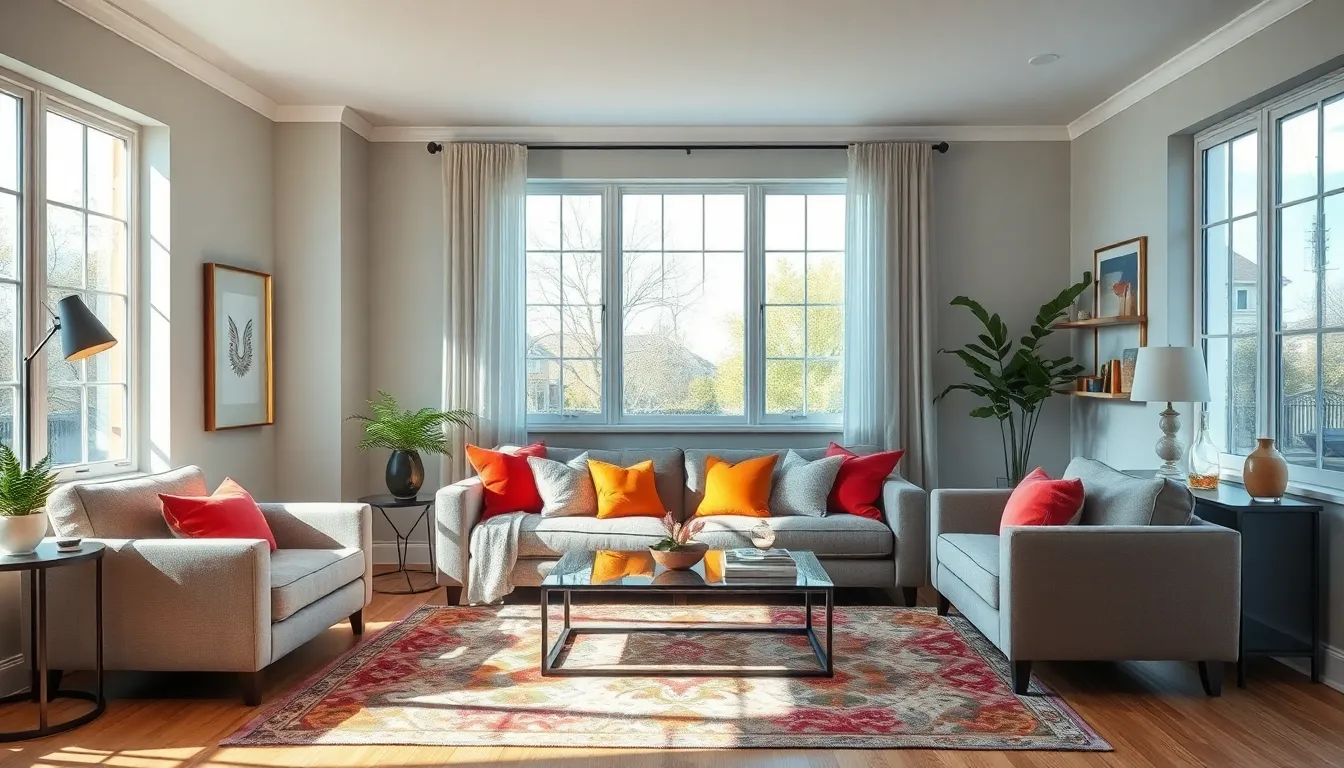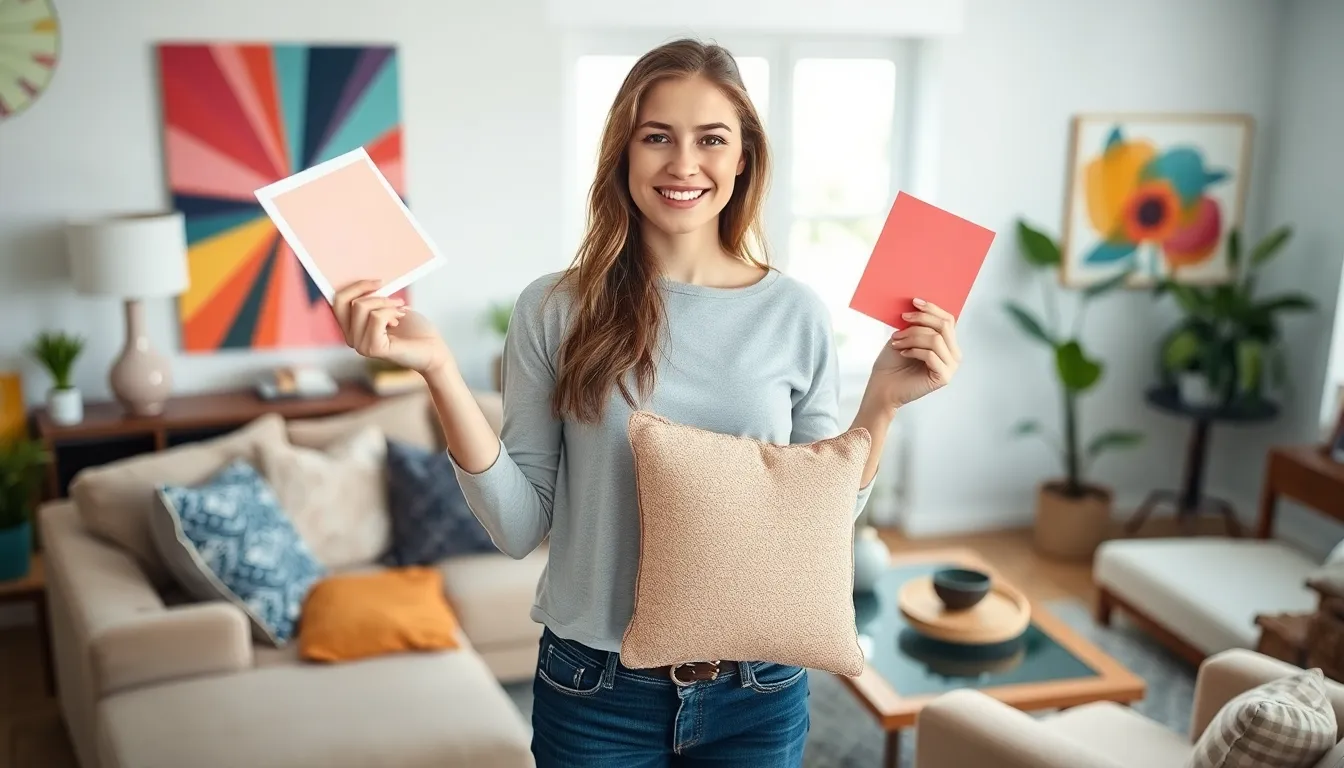Ready to give your home a makeover? Redecorating can feel like a daunting task, but it doesn’t have to be! With the right guides, transforming your space into a stylish sanctuary is as easy as pie—minus the calories. Whether you’re channeling your inner Picasso or just trying to make sense of that questionable wallpaper from the ’80s, this article’s got you covered.
Table of Contents
ToggleOverview of Redecorating Guides
Redecorating guides serve as essential tools for homeowners aiming to refresh their spaces. These guides range from practical tips to comprehensive plans, addressing various styles and budgets. Users often find step-by-step instructions particularly helpful for tackling specific projects.
Finding inspiration is a critical first step in the redecoration process. Many guides feature visual examples from magazines and online platforms showcasing current trends. Resources like Pinterest or Instagram offer endless ideas, making inspiration easily accessible.
Understanding color theory also plays a vital role. Selecting palettes that harmonize with existing furnishings and personal tastes enhances the overall aesthetic. Different colors evoke distinct moods, so choosing the right ones can significantly impact the atmosphere of a room.
Layout options should not be overlooked. Guides often suggest experimenting with arrangements to optimize space and flow. Utilizing furniture templates can help visualize new setups before actual implementation.
Selecting materials is another key consideration. Quality matters, so investing in durable options ensures longevity. Many guides recommend comparing various materials, such as textiles, woods, and finishes, to achieve the desired outcome.
Budgeting is essential throughout the redecoration process. Establishing a clear financial plan helps prioritize expenditures and avoids overspending. Guides frequently include budgeting worksheets, allowing users to track unaffordable options and adjust accordingly.
Incorporating personal touches gives spaces individuality. Adding unique decor items or family heirlooms enhances the design while making the environment feel more inviting. Many guides stress the importance of melding personal style with functional design elements to create a cohesive look.
Key Elements of Effective Redecorating

Effective redecorating hinges on several key elements that guide homeowners toward successful transformations. Understanding how to select a color palette and furniture enhances a space significantly.
Choosing a Color Palette
Selecting a color palette forms the foundation of any redecorating project. Homeowners should consider their personal style and the room’s purpose. A balanced combination of colors creates harmony and promotes the desired atmosphere. Neutral tones such as beige, gray, and white can provide a versatile backdrop. Bold colors might energize a space, particularly in areas meant for gathering. Incorporating complementary accent colors adds visual interest. Resources like color wheel tools simplify the selection process. Utilizing paint samples on walls helps visualize the final look, aiding in decision-making.
Selecting Furniture and Décor
Selecting furniture and décor involves more than just aesthetics. Comfort and functionality remain paramount when making choices. Measuring room dimensions ensures a proper fit for furnishings. Opting for multi-functional pieces maximizes space efficiency. Styles like modern, traditional, or eclectic vary in terms of design preferences. Unique décor items, such as artwork or rugs, allow for personal expression. Quality materials contribute to longevity and can withstand daily use. Analyzing existing elements helps create a cohesive theme. Balancing proportions between furniture and decorative accents enhances visual appeal.
Popular Redecorating Styles
Various redecorating styles exist, each with unique characteristics and appeal. Understanding these popular options helps homeowners make informed choices.
Modern Minimalism
Modern minimalism emphasizes simplicity and function. Clean lines and a limited color palette dominate this style, creating a sense of calm. Furnishings often feature sleek designs without excessive ornamentation. Incorporating natural materials like wood or stone enhances the aesthetic. Open spaces with plenty of light, such as large windows, integrate seamlessly into this approach. Accessories remain minimal; a few well-placed items add interest without clutter. Overall, modern minimalism suits those who prefer a tidy yet stylish environment.
Rustic Charm
Rustic charm evokes warmth and a connection to nature. This style features a blend of weathered textures and natural elements. Exposed wooden beams and brick walls contribute to a cozy vibe. Earthy color palettes of browns, greens, and soft neutrals create a soothing atmosphere. Textiles, such as wool and linen, add comfort and tactile appeal. Vintage furniture and handcrafted decor enhance the rustic theme, promoting a sense of history and authenticity. A well-decorated rustic space feels inviting and lived-in, perfect for relaxation.
Eclectic Mix
Eclectic mix celebrates diversity and creativity in home decor. Combining various styles, colors, and textures results in a unique atmosphere. This approach encourages mixing vintage finds with contemporary pieces, promoting individuality. Bold patterns and unexpected color combinations often feature prominently. Pieces from different eras reflect personal stories and interests. Layering textiles, such as rugs and cushions, adds depth and visual interest. Ultimately, an eclectic mix creates a dynamic space that showcases personality and flair.
Step-by-Step Redecorating Process
Redecorating can be simplified into a structured process. Following key steps ensures a successful transformation of your space.
Planning and Budgeting
Planning sets the foundation for successful redecoration. Homeowners should define their goals, whether updating colors or changing furniture. Prioritizing tasks streamlines the overall process. Establish a realistic budget to avoid overspending, allowing room for unexpected expenses. Using budgeting worksheets helps track costs effectively. Identify essential purchases versus optional items to keep finances in check. This clarity enables better decision-making throughout the project.
Shopping Tips and Tricks
Smart shopping enhances the redecoration experience. First, create a list of needed items based on the established plan. Focus on quality over quantity, as durable furnishings last longer. Research prices online for better deals, ensuring to compare similar products across retailers. Consider visiting local thrift stores or online marketplaces for unique finds at lower prices. Always measure spaces before purchasing to ensure a proper fit. Lastly, don’t rush; taking time can lead to discovering truly special pieces.
Redecorating a home is an exciting journey that allows for personal expression and creativity. With the right guidance and resources it’s possible to transform any space into a stylish haven. By focusing on key elements like color palettes furniture selection and layout homeowners can create environments that reflect their unique tastes.
Utilizing budgeting tools and shopping tips further enhances the experience making it both enjoyable and manageable. Embracing various styles and incorporating personal touches can result in a cohesive and inviting atmosphere. Ultimately the process of redecorating not only revitalizes a home but also instills a sense of pride and accomplishment in its inhabitants.


